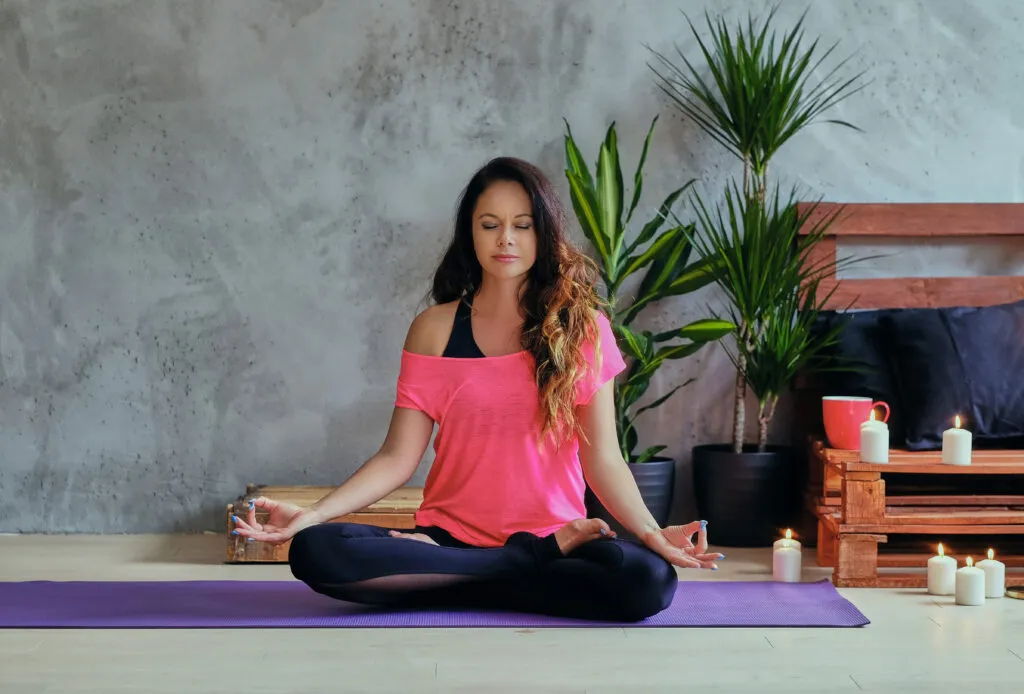Lung Health: 5 Yoga Asanas To Promote Better Respiratory Heath

Introduction: 5 Yoga Asanas To Promote Better Respiratory Heath
What is lung health? – In Lung Health today’s fast-paced world, where pollution and stress often take a toll on our respiratory health, prioritizing lung health is crucial. While various factors contribute to respiratory issues, incorporating yoga into your routine can significantly improve lung function and overall well-being. Yoga not only strengthens the lungs but also promotes deep breathing, enhances lung capacity, and reduces stress levels. Here are 5 yoga asanas to promote better respiratory heath.
1 – Pranayama (Yogic Breathing):
Pranayama encompasses various breathing techniques that focus on expanding lung capacity and increasing oxygen intake. Practices like deep belly breathing (diaphragmatic breathing), alternate nostril breathing (Nadi Shodhana), and Kapalabhati (skull-shining breath) enhance respiratory efficiency, calm the mind, and alleviate stress.
2 – Bhujangasana (Cobra Pose):
Bhujangasana stretches the chest, lungs, and shoulders, facilitating deep breathing and improving respiratory function. This asana strengthens the spine, opens the heart center, and stimulates abdominal organs, enhancing overall lung health. Regular practice of Cobra Pose also helps relieve asthma symptoms and expands the chest cavity for better airflow.
3 – Ustrasana (Camel Pose):
Ustrasana expands the chest and rib cage, improving lung capacity and circulation. This asana opens the front body, stretches the lungs, and stimulates the respiratory system. Camel Pose also encourages deep breathing, alleviates respiratory congestion, and enhances oxygenation throughout the body, promoting better lung health.
4 – Setu Bandhasana (Bridge Pose):
Setu Bandhasana not only strengthens the back, glutes, and hamstrings but also expands the chest and improves lung function. By lifting the chest and opening the heart, Bridge Pose increases lung capacity, enhances oxygen flow, and relieves tension in the respiratory muscles. Regular practice of this asana also calms the mind, reduces anxiety, and promotes overall respiratory well-being.
5 – Savasana (Corpse Pose):
Savasana is a relaxation pose that allows the body to fully absorb the benefits of the preceding yoga practice. By consciously relaxing the body and mind, Savasana reduces stress, lowers blood pressure, and promotes deep, restorative breathing. This asana encourages diaphragmatic breathing, enhances lung efficiency, and rejuvenates the respiratory system, fostering optimal lung health.
Conclusion:
Incorporating these yoga asanas into your daily routine can significantly enhance your respiratory health and overall well-being. Remember to practice with awareness, focus on deep, controlled breathing, and listen to your body’s signals. Alongside yoga, maintaining a healthy lifestyle, staying hydrated, and avoiding smoking or exposure to environmental toxins are essential for optimal lung function. Prioritize your lung health today, and breathe easy for a healthier tomorrow.
FAQs:
What are the benefits of yoga for respiratory health?
Yoga offers numerous benefits for respiratory health, including increased lung capacity, improved breathing techniques, strengthened respiratory muscles, reduced stress levels, and enhanced oxygenation throughout the body. Regular practice of yoga can also alleviate symptoms of respiratory conditions like asthma and bronchitis.
Which yoga asanas are most effective for promoting better lung health?
Several yoga asanas are particularly beneficial for lung health, including Pranayama (breathing exercises), Bhujangasana (Cobra Pose), Ustrasana (Camel Pose), Setu Bandhasana (Bridge Pose), and Savasana (Corpse Pose). These asanas focus on expanding the chest, increasing lung capacity, and promoting deep, controlled breathing.
How often should I practice these yoga asanas for optimal respiratory benefits?
It’s recommended to practice these yoga asanas for lung health at least 3-4 times per week for noticeable improvements. Consistency is key, so establishing a regular yoga routine and incorporating these asanas into your practice can yield the best results. However, listen to your body and adjust the frequency based on your individual needs and abilities.
Can yoga help with respiratory conditions such as asthma or COPD?
Yes, yoga can be beneficial for managing respiratory conditions like asthma or COPD (Chronic Obstructive Pulmonary Disease). Certain yoga practices, such as Pranayama and gentle asanas that focus on deep breathing and relaxation, can help alleviate symptoms, improve lung function, and enhance overall respiratory well-being.
Are there any precautions I should take when practicing yoga for lung health?
While yoga is generally safe for most people, it’s essential to practice with awareness and listen to your body’s limitations. If you have any pre-existing medical conditions or injuries, consult with a healthcare professional or a certified yoga instructor before attempting these asanas. Additionally, focus on proper alignment, avoid overexertion, and breathe deeply and mindfully throughout your practice to prevent strain or injury.
Must read:
What Causes Numbness in Hands While Sleeping?
Secrets of DMT Meditation: What Is DMT Meditation and How Does It Work?
Benefits of Cirkul Water Bottle for On-the-Go Hydration | 2023
Why Does Conjunctivitis Eye Infection Happen? | Pink Eye | 2023
Exploring the Exciting World of AI Technology | 2023
Top 8 Japanese Dog Breeds: A Closer Look at the Most Beloved and Iconic Breeds from Japan
Reason Behind Pollution in Delhi in Winter Season: Causes and Solutions
A Festival of Lights and Togetherness in India
Why is Quantum Computing Useful For Optimization Problems? | Reshaping Industries | 2023
Do You Know? – How to apply for overseas education loan in India
New Heights: The Race for America’s Tallest Building | 2024






